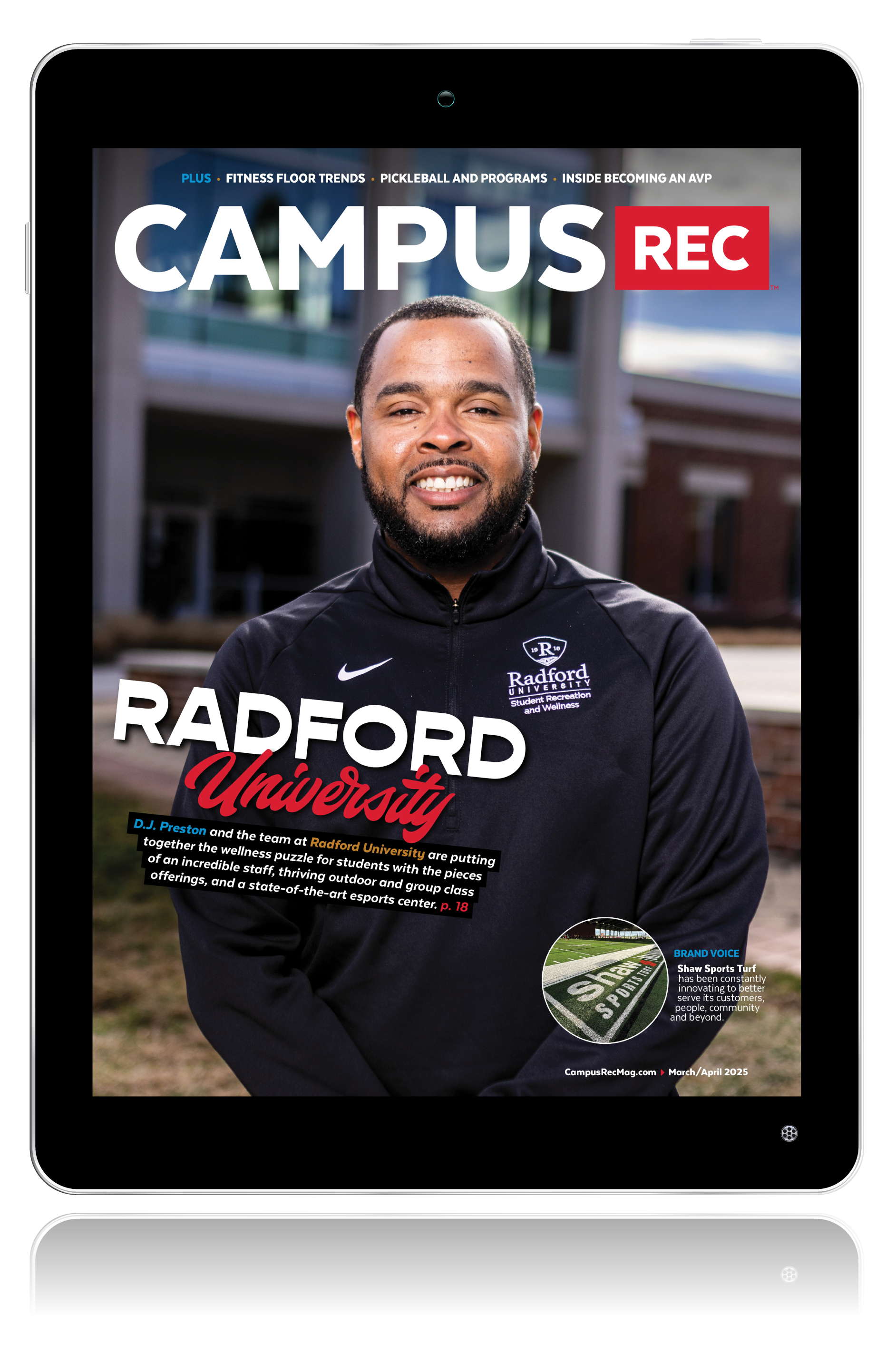My wife and I frequent a local group training studio, and we’re also fortunate enough to have a small gym set-up in our basement. Recently, our oldest daughter approached my wife and I during a home workout and wanted to join us! Pretty cool that our 7-year-old daughter wants to workout, right? But it was her question upon joining the workout that really got me to thinking.
Her question – “Dad, what type of workout are we doing today. Are we doing planks and pushups, or using TRX? Is mom using the roller today?” If you can cut through some of the sarcasm our 7-year-old has already mastered, the fact remains that she didn’t say anything about the elliptical machine or the adjustable bench.
You see, this style of movement based training — largely characterized as functional training — in a group setting is all our daughter has ever been exposed to. And if you drill deeper, the same could be said for a great many students entering a college or university these days. Our young adults have grown up being exposed to much safer styles of training. And more recently, the explosion of formats and concepts that promote healthy competition and team building, like CrossFit and programming for small group training.
The late ‘90s and early 2000s saw the introduction of functional tools like the BOSU (’99) and the TRX Suspension Trainer (2004). Pavel Tsatouline’s “The Russian Kettlebell Challenge” in 2001 is largely credited with popularity of the kettlebell. Further, the ever popular CrossFit saw their first box open in 2000 in Seattle, Washington.
The popularity of group personal training and functional training really began to gain traction in the early 2000s. It could be argued the popularity of CrossFit and functional training led to the introduction of the popular American Ninja Warrior in 2009. The same could be said for the massive growth of adventure races such as the Tough Mudder, the Spartan, The Warrior Dash and the list goes on.
Students are coming to college with a very unique perspective around fitness training. They see this as a great place to train safely and a safe place to develop relationships. We’re all aware of the demands that come with being a college student. In addition to the demands of their academic schedule, there are the exterior distractions of political discourse, race relations, bullying, etc.
College recreation departments have a great opportunity and the unique ability to provide their students with fitness areas that are safe, welcoming and supportive. It’s not hard to see why the integration of dynamic functional training areas into college recreation centers has become an important topic. When intelligently designed and equipped accordingly, these zones have the strong potential to further promote positive behaviors.
The results will be students forging new relationships with fellow classmates and staff, collaboration and team building, and healthy lifestyle habits for their lives after college.
Justin Campbell is a functional design specialist at Aktiv Solutions. For more information he can be reached at jcampbell@aktivsolutions.com.










